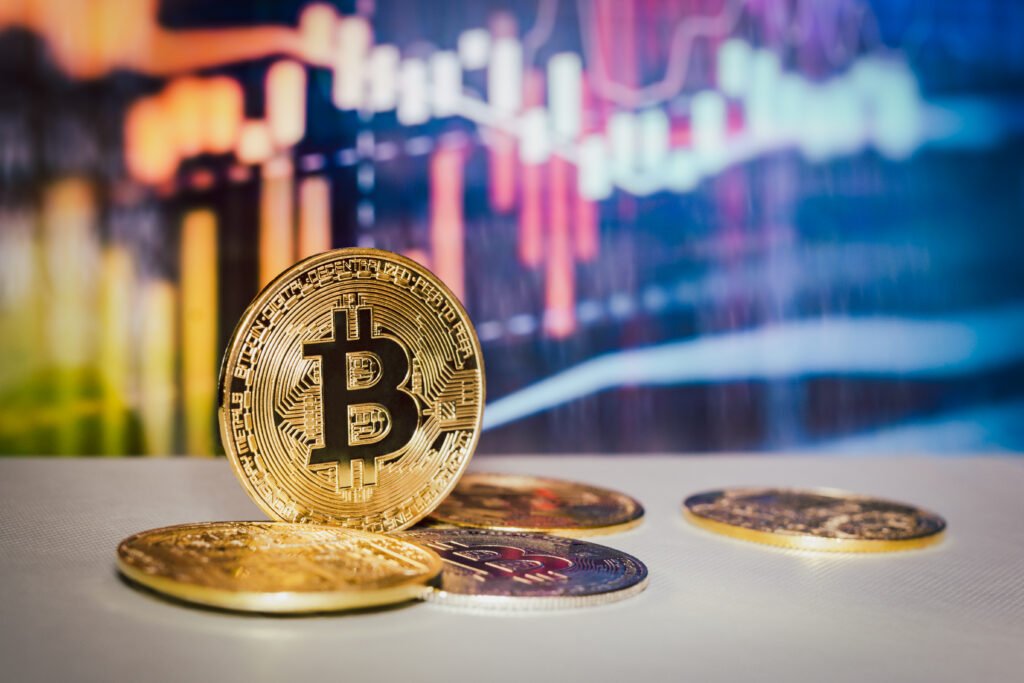Bitcoin, as popular as it might seem, still feels confusing at first to a lot of people, but don’t worry—you’re not alone! This guide will explain what Bitcoin is, its history, how it works, and how you can get started safely.
What is Bitcoin?
Bitcoin is a digital currency created in 2009 by an anonymous person or group known as Satoshi Nakamoto. Unlike traditional money (like dollars or euros), Bitcoin isn’t controlled by any government or bank. It operates on something called blockchain technology, which is like a digital ledger that records every Bitcoin transaction.
In simple terms, Bitcoin lets you send and receive money online without needing a bank. It is decentralized, which means no one controls it—bitcoin belongs to the people who use it.
Why Should You Consider Bitcoin?
Bitcoin offers several benefits that make it attractive to many people. One of which is its potential for high returns. Experts predicted the price of bitcoin to be $123,000 by the end of 2025, making it a considerable asset to invest in. Additionally, you can send money anywhere in the world using bitcoin with lower fees compared to traditional banks. With Bitcoin, you hold the keys to your money, which means there are no middlemen, and banks cannot control nor freeze your funds.
Risks of Bitcoin
Bitcoin, despite its profitable capabilities, is not without its risks. Due to its high volatility, the price of bitcoin goes up and down rapidly, thereby causing loss. Most importantly, losing your password (called a private key) signifies total loss of your bitcoin, as it is unrecoverable by any institution.
How to Get Started with Bitcoin
Here are the steps to get started.
1. Choose a Bitcoin Wallet
A wallet is where you store your Bitcoin. There are two main types of wallets:
- Hot Wallets: These are online wallets connected to the internet. They’re easy to use, making them perfect for beginners, but they’re more vulnerable to hacking.
- Cold Wallets: These are offline wallets like hardware wallets or paper wallets. They are more secure because they aren’t connected to the internet, but they can be a bit harder to set up.
If you’re just starting, you can use a hot wallet, like those found on cryptocurrency exchanges or mobile apps.
2. Buy Bitcoin
Once you’ve got your wallet, it’s time to buy your first Bitcoin (or a small part of it—you don’t need to buy a whole Bitcoin). Here’s how:
- Choose a Platform: You can buy Bitcoin from cryptocurrency exchanges like Binance, Coinbase, or peer-to-peer platforms like LocalBitcoins or Paxful.
- Make a Purchase: Link your bank account or card to the platform, choose how much Bitcoin you want to buy, and confirm the purchase. Remember, you can buy as little as $10 worth of Bitcoin.
3. Secure Your Bitcoin
Keeping your Bitcoin safe is crucial. Here are some simple security steps:
- Keep Your Private Key Secret: Think of your private key as your password to your Bitcoin. Never share it with anyone.
- Backup Your Wallet: Write down your wallet’s recovery phrase (a set of random words) and store it in a safe place. If you lose access to your wallet, this phrase helps you recover it.
- Enable Two-Factor Authentication (2FA): This adds an extra layer of security when logging into your accounts or wallet.
How to Use Bitcoin
Now that you have some Bitcoin, here’s how you can use it:
- Send and Receive Bitcoin: To send Bitcoin, you need the recipient’s wallet address. Think of it as their bank account number. You can send Bitcoin directly to them through your wallet.
- Spend Bitcoin: Many online stores, services, and even some physical shops accept Bitcoin as payment. You can pay for items just like you would with cash or a credit card.
- Hold or Invest: Many people choose to hold onto their Bitcoin as an investment, hoping its value will increase over time. This is known as “HODLing” in the crypto community.
Final Thoughts
Getting started with Bitcoin might seem like a whole lot, but this guide has simplified everything you need to know and how to get started. Start by choosing a wallet, buying a small amount of Bitcoin, and securing your funds. Bitcoin can be an exciting way to explore cryptocurrency. Whether you’re investing for the future or just curious, taking that first step is key.


